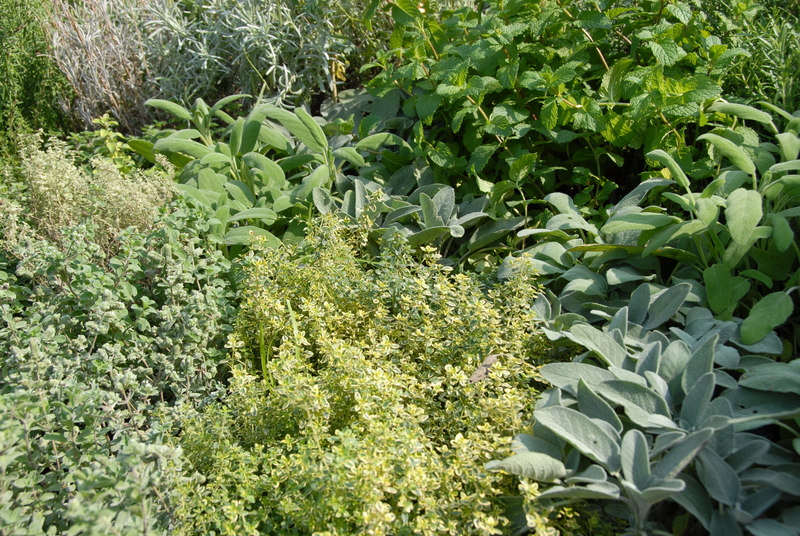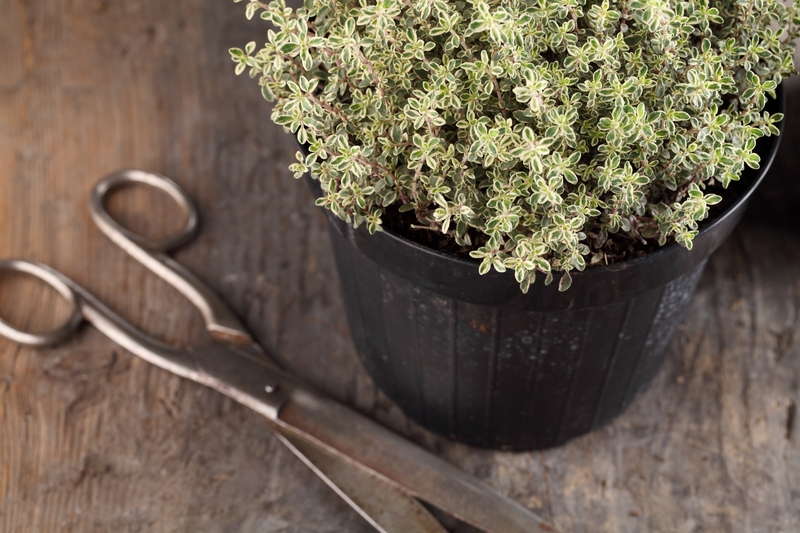Lawnkeeping Secrets to Outlast Summer Drought
Is your lawn struggling through sweltering days and water restrictions? Don't fret! In this comprehensive guide, we share advanced lawnkeeping secrets and proven lawn care strategies to help your lawn survive and even thrive during the harshest summer droughts. If you want to keep your grass greener, healthier, and more resilient against extreme heat and dryness, this guide is for you.
Why Drought-Proofing Your Lawn Matters
As climate patterns shift and water scarcity becomes a growing concern, having a lush, vibrant lawn through summer drought isn't just about curb appeal--it's about sustainability and smart gardening. Drought conditions stress grass, leading to brown patches, weed invasions, and even permanent turf damage. By implementing drought-resistant lawn care practices, you can safeguard your investment, conserve water, and minimize your environmental footprint.
Benefits of Drought-Tolerant Lawn Management
- Reduces your water bills and overall water usage
- Keeps your outdoor space cool and inviting
- Promotes a healthy, resilient ecosystem for beneficial insects and birds
- Improves soil quality and structure
- Prevents erosion and runoff, especially on sloped properties

1. Start with the Right Grass: Choose Drought-Resistant Varieties
Not all grasses are equally equipped to handle dry, hot summers. Selecting the appropriate turfgrass species is the foundation of successful summer lawnkeeping. Some of the best drought-tolerant options include:
- Bermuda Grass: An all-star warm-season grass with deep roots that tolerate heat and drought exceptionally well.
- Zoysia: Known for its thick carpet-like appearance and heat resistance.
- Buffalo Grass: Native to North America, requiring minimal water once established.
- Tall Fescue: Deep rooting makes it more adaptable in cooler climates prone to dry spells.
Tip: When overseeding or replacing your lawn, opt for blends specifically labeled as 'drought-tolerant' or 'water-wise'.
2. Master the Art of Deep, Infrequent Watering
One of the classic lawn care mistakes is frequent, shallow watering. This approach encourages shallow roots, making grass more vulnerable to drought. Instead:
- Water less often, but more deeply--soak the soil to a depth of 6 inches.
- Target early mornings (before 10 a.m.) to reduce evaporation loss.
- Install soaker hoses or drip irrigation for even, efficient moisture delivery.
- Check local watering restrictions and adjust your schedule accordingly.
- Invest in smart irrigation controllers that adapt to weather conditions.
Pro tip: Dig a small hole or use a screwdriver to check soil moisture below the surface. Dry topsoil doesn't mean your roots aren't getting water.
3. Mowing Strategies for Drought Survival
Mowing height has a significant impact on your lawn's ability to withstand drought. Grass that's cut too short loses its shade, exposes roots, and loses moisture rapidly. Here's how to mow for maximum drought resistance:
- Raise your mower blades: Keep grass 3-4 inches high during summer.
- Sharpen mower blades regularly--dull blades tear grass, increasing water loss and disease risk.
- Never remove more than 1/3 of the blade height at a time to reduce stress.
- Leave clippings (grasscycling) to help conserve moisture and return nutrients to the soil.
4. Mulching: The Unsung Hero
Mulching is not just for flower beds! Applying a thin layer of organic mulch (like shredded leaves, compost, or pine straw) around the base of grass and landscaping plants helps:
- Retain soil moisture by reducing evaporation
- Lower soil temperature, protecting roots from summer heat
- Add organic matter, boosting soil structure and health
- Suppress weed growth that would compete for water
Extra tip: If you have bare spots, sprinkle with a mix of compost and drought-resistant seed for natural repair and mulching in one go.
5. Soil Conditioning for Maximum Water Retention
Healthy soil holds more water and supports deeper grass roots. To drought-proof your lawn from the ground up:
- Aerate compacted soil once or twice a year, creating channels for water and oxygen to reach the roots.
- Add organic compost to improve water-holding capacity, beneficial microbes, and nutrient content.
- Use humate or wetting agents if your soil is highly sandy or heavy clay. These amendments increase water infiltration and retention.
- Test your soil pH and correct imbalances; stressed lawns are less drought-tolerant.
6. Fertilize Smartly--But Sparingly
Too much nitrogen in summer can actually harm your lawn, encouraging shallow roots and tender, thirsty growth. Instead, strengthen your turf for drought with these fertilizing tips:
- Apply a slow-release, organic fertilizer in spring or fall--not in peak summer heat.
- Check for potassium-rich formulas, which increase root strength and drought tolerance.
- Skip fast-release chemical fertilizers during drought periods.
- Always water well after fertilizing to prevent burning.
7. Weeds and Pests: Silent Enemies During Drought
Summer drought weakens grass and creates openings for weeds and pests to take over. Keep the upper hand:
- Pull weeds by hand when soil is moist, or use spot herbicide treatments (avoid blanket spraying in drought).
- Encourage natural predators (like birds and beneficial insects) to control lawn pests.
- Monitor for signs of grubs or chinch bugs, which often strike stressed lawns.
- Thicker turf works as a natural defense--overseed thin spots in early fall or spring for future resilience.
8. Master the Timing: When to Water, Fertilize, and More
Seasonal timing makes all the difference in your summer lawn survival strategy:
- Water in early morning (4 a.m. - 10 a.m.) for best absorption
- Fertilize and overseed in cooler seasons (late spring or early fall) to prepare for summer
- Avoid mowing during midday or heatwaves, which stresses your grass further
- Apply soil conditioners or mulch before drought begins for best effect
9. Renovation and Reseeding for Ultimate Drought Tolerance
Sometimes, the best way to outlast future droughts is to build a hardier lawn now:
- Overseed with drought-resistant grass each fall to gradually replace thirstier varieties
- Replace sections of thirsty lawn with ornamental grass, groundcovers, or xeriscape beds
- Consider reducing total lawn area, especially in hard-to-water zones or shade
This long-term strategy saves water, time, and effort in the face of intensifying summer droughts.
10. Alternative Water Sources and Harvesting Techniques
Maximize sustainability and drought survival with creative water solutions:
- Install a rain barrel to collect roof runoff for irrigation
- Direct downspouts toward your lawn's root zones
- Consider "greywater" (recycled household water--check local regulations)
- Use permeable landscaping around your lawn to enhance groundwater recharge
11. Lawn Alternatives: Xeriscaping and Artificial Turf
In extreme drought-prone areas, rethink the traditional lawn:
- Xeriscaped yards feature native plants, ornamental grasses, rocks, and mulch for beautiful low-water landscapes
- Artificial turf delivers year-round green without irrigation--perfect for play areas or putting greens
- Wildflower meadows or groundcovers can add color and texture while dramatically reducing water needs
FAQs: Surviving Summer Drought with a Strong Lawn
How often should I water my lawn during drought?
Deep watering once per week is often sufficient for established, drought-resistant lawns. Adjust based on soil type, grass species, and weather.
Is it better to let my lawn go dormant in drought?
Most cool-season grasses will naturally go dormant (brown) during drought, but usually recover with fall rains. Water every few weeks just enough to keep roots alive.
Can I fertilize my lawn during a summer drought?
Avoid fertilizing in extreme heat and drought. Instead, focus on soil health and moisture retention, and fertilize in cooler, wetter seasons.
How can I tell if drought is damaging my lawn?
Signs include wilting, color change (gray-blue rather than green), and footprints that don't spring back. React by adjusting your watering strategy and providing shade if possible.
What are the best grass types for drought-prone climates?
Bermuda, Zoysia, Buffalo, and Tall Fescue stand out for drought tolerance. Consult your local garden center for varieties suited to your region and soil.

The Secret to a Year-Round Healthy Lawn: Consistency and Adaptation
There's no "magic hack" for drought proofing your yard; the best lawnkeeping secrets to outlast summer drought lie in smart planning and consistent, adaptive care. Combine mowing high, deep watering, wise fertilizing, healthy soils, and the right choice of grass for climate. Don't forget, sometimes less is more--a smaller, healthier lawn or a xeriscaped yard can save huge amounts of water while looking stunning.
Quick Recap: Top 10 Drought-Proof Lawnkeeping Secrets
- Choose drought-resistant grass species
- Water deeply and less frequently
- Mow higher and smarter
- Mulch to conserve moisture
- Aerate and amend soil regularly
- Fertilize only as needed--never over-fertilize in summer
- Keep weeds and pests in check naturally
- Time your chores for maximum climate adaptation
- Consider renovation with drought-hardy seeds or turf
- Explore alternative watering and landscaping options
Conclusion: Make Your Lawn Drought-Resilient, Beautiful, and Green
Surviving a brutal summer drought doesn't mean sacrificing your lawn. By leveraging these lawn care tips to outlast summer drought, you can enjoy a lush, green garden while saving water and supporting a healthier ecosystem. Remember, health starts from the ground up--focus on plants, soil, and smart practices rather than quick fixes. With patience and proactive action, your lawn will endure even the toughest dry spells and come back stronger every season!
Grow smarter, conserve more, and let your lawn become the envy of the neighborhood--even under the harshest summer sun!